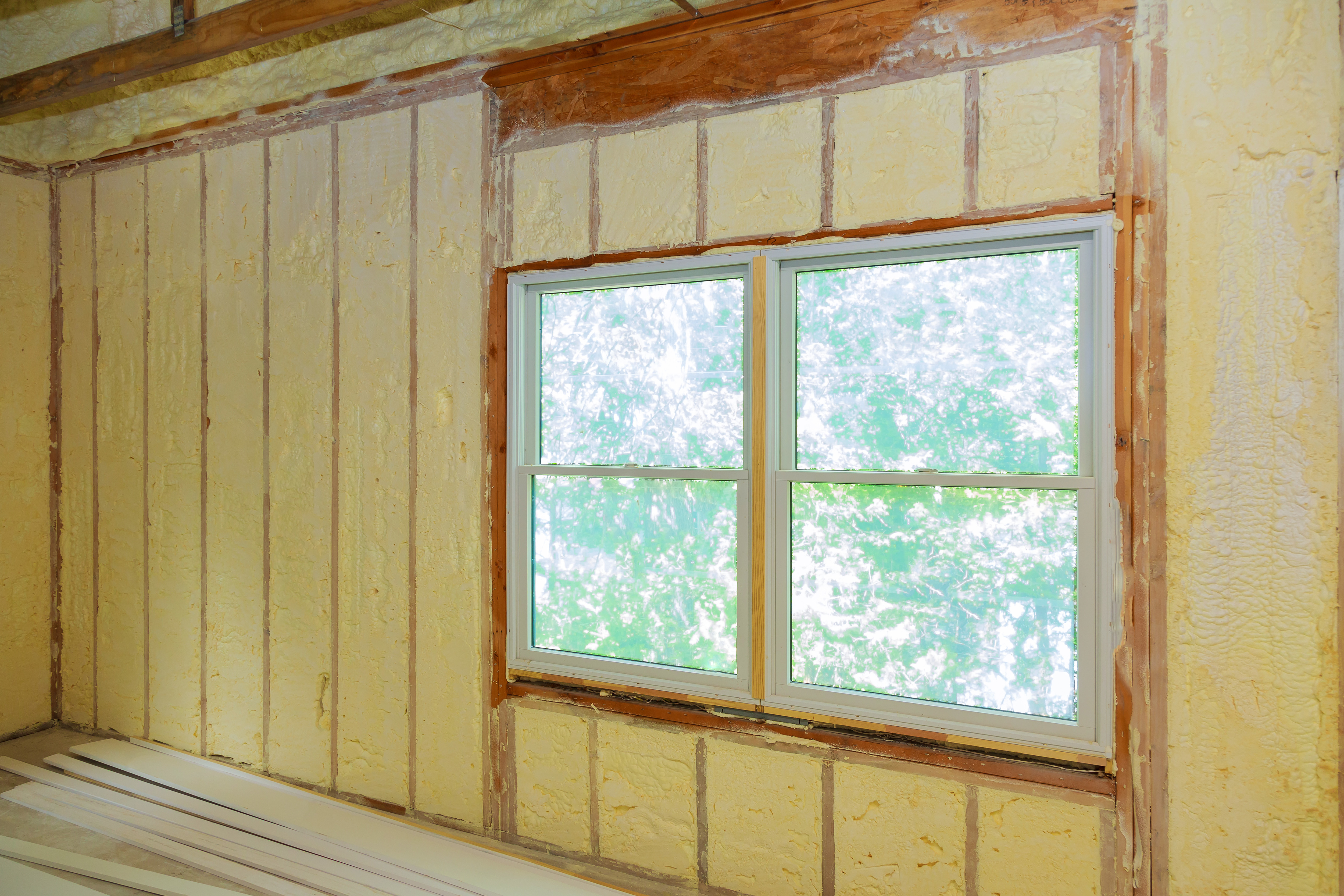The photo shows spray foam after been applied to a stud wall and cut back to allow plasterboard installed with ease. Synthesia spray foam has multiple of uses from walls, attics, floors. It’s excellent at reducing airflow into a building and increasing the heat retention of the property. The product does not contain foaming agents that are harmful to the atmosphere or contribute to global warming and are now in its fourth generation of development.
Open Cell foam is used for roof pitches in a new build or a retrofit in an existing house. A ventilation card is fitted first to create a continuous airflow between the roof felt and the foam. The foam is then sprayed to the card, ensuring no interference with the airflow. A dormer house is always the hardest to heat, so it’s vital to use products that give the maximum return. When it’s painted and furnished, it is too late.
Closed-cell foam has many uses from cavity walls to corrugated roofs in commercial buildings including workshops, storage units with vintage cars, and steel containers with valuable equipment that don’t need condensation dripping down on them, it’s a very versatile foam. Synthesia closed cell spray foam is used in agricultural barns for a complete reduction in condensation, which otherwise would destroy crops stored in the barns. It’s very resistant to everyday environments, once it’s not exposed to continuous UV light.
With the increase of modern heat sources like heat pumps that have pipes installed in the ground, closed-cell foam is an ideal solution for heat loss and creates a complete seal around pipes so that there is no loss of energy through the ground. Synthesia spray foam closed cell is such a versatile foam.
Synthesia Sprayfoam;https://youtu.be/0canss2Mp0Certified by the NSAI; https://www.nsai.ie/images/uploads/certification-agrement/IAB_190414_Sythesia_2020.pdf





